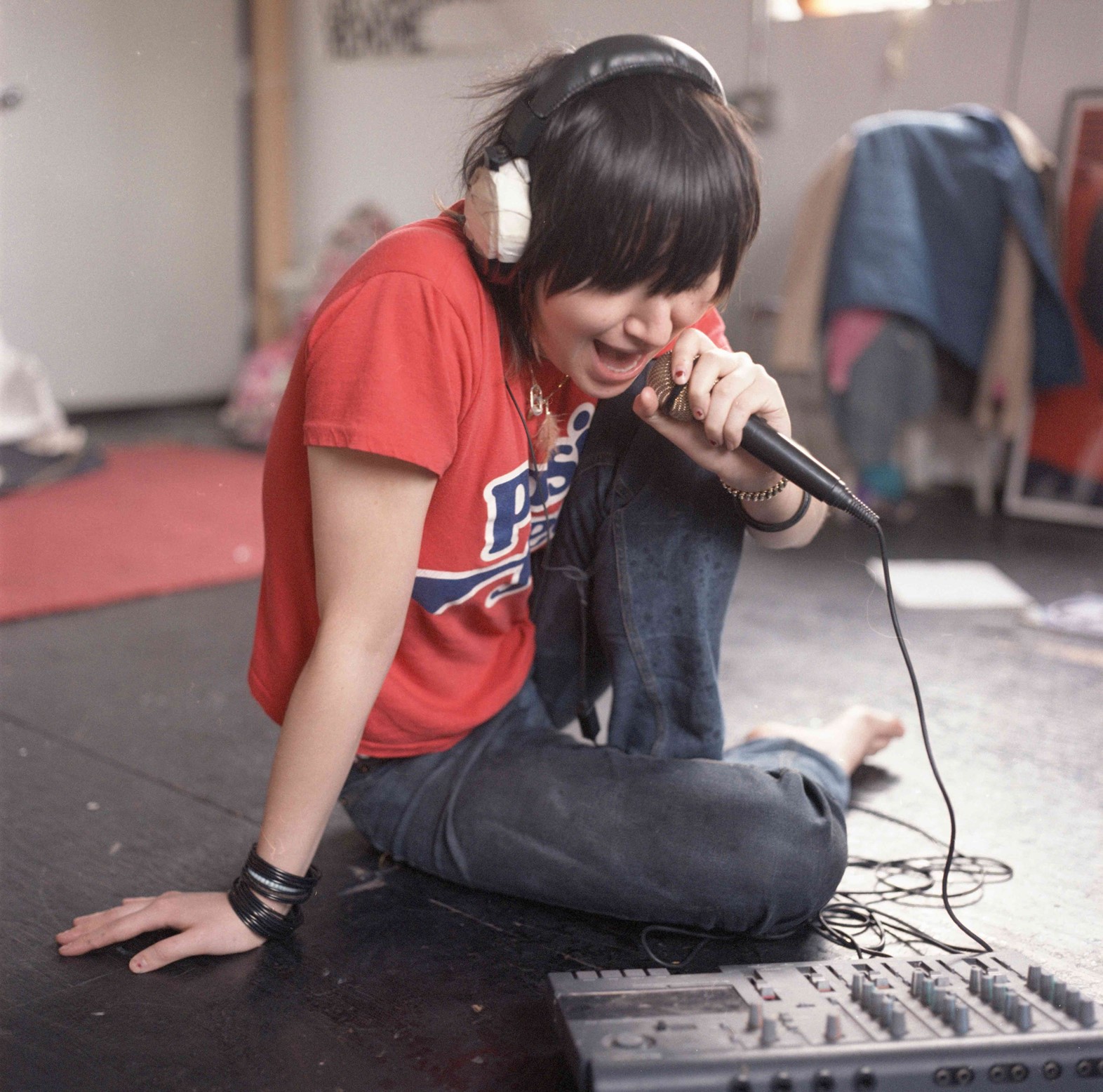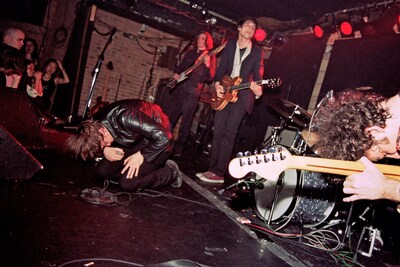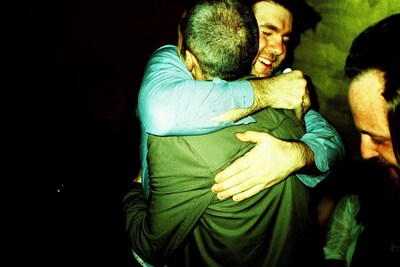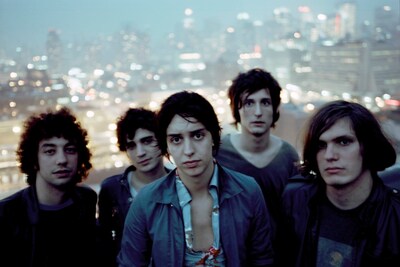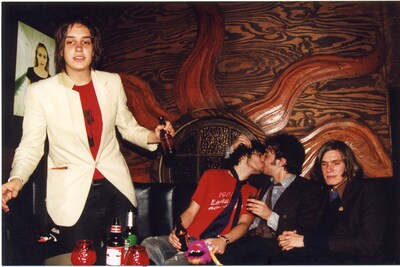Dylan Southern and Will Lovelace talk about Meet Me in the Bathroom, their new documentary charting the rise of bands like The Strokes, Yeah Yeah Yeahs, and LCD Soundsystem in New York during the 2000s
When filmmakers Dylan Southern and Will Lovelace began work on Meet Me in the Bathroom – a big screen revision of Lizzy Goodman’s oral history of New York’s indie rock scene circa 2000, published in 2017 – they did so with a modest archive and a great deal of faith.
“Bands were helpful,” explains Southern on a Zoom call. “‘Have you met Nanci?’ people would say. She hung around and took photographs, had a video camera. We found her in LA and she had a suitcase full of undeveloped rolls of film and tapes. Stuff like that was really exciting.” Stories such as Nanci Sarrouf’s, in addition to multiple deep-dives on old fan message boards via digital archive The Wayback Machine, were core to the project’s realisation. “So much of it we just didn’t know existed,” adds Lovelace. “There’s photographs of The Strokes on their first UK tour that we bought as a fanzine on eBay run by two guys who don’t do it anymore. They had unpublished photographs and a recording of an interview.”
Based in Liverpool at the advent of the scene – 1999 through to 2004 in the film; Goodman’s book goes up to 2011 – the directors still fondly remember listening to Is This It, Fever to Tell and Turn On the Bright Lights (the debut LPs of The Strokes, Yeah Yeah Yeahs and Interpol, respectively) in their shared office. “I have a really strong memory of Dylan bringing those records in, and it was exciting,” says Lovelace. “There was a huge cultural vacuum in the few years before,” notes Southern. “I remember seeing The Strokes on MTV [and] thinking, ‘Wow, where have these guys come from?’. And because the British press got so behind it, it felt like it was very much happening here at the same time as it was happening in New York.”
That trio of bands, with the addition of James Murphy’s LCD Soundsystem – with whom Southern and Lovelace worked on 2012’s Shut Up and Play the Hits – claim much of the film’s narrative, while The Moldy Peaches and The Rapture appear as supporting characters, and TV On The Radio feature somewhere on the periphery. “We knew the book was an epic tome and that a film could not do what the book does, being really forensic about the scene,” says Southern. “So we viewed the stories of each artist as a coming of age, and we were interested in how we could make it universal.” Produced then in the vein of a companion piece, the Julian Casablancas-led outfit are given ample screen time, championed by US audiences first and quickly claimed by the UK, where many of the bands experienced early fame. “Every person that we met said ‘do you know The Strokes? Are you friends with The Strokes?’” remembers a semi-disgruntled Paul Banks of his own band’s disappointing first UK tour.
A chapter that preceded YouTube and social media (streaming’s arrival is referenced with an album leak on Napster), the directors have attempted to mitigate severe nostalgia, rejecting a talking head model for voiceovers and found footage that largely oscillates between gigs and the wider cultural moment – namely the perceived threat of Y2K and the aftermath of 9/11, which informs the immediacy of those in the scene. “One of the things that drew us to the story was the specific time period,” says Southern. “These bands emerged into a world that was about to change in various ways, technologically, culturally, politically. There is a certain amount of melancholy to the film, but I think that comes with the territory.”
In a particularly poignant crossover, Paul Banks is seen on a Manhattan street amongst the debris of the Twin Towers. “We’ve seen so many documentaries, articles and books about the effects of 9/11, but I’d never read the artistic community’s reaction to it [until Lizzy’s book]. Finding the footage of Paul on the day of 9/11, with the papers still falling from the sky, it felt really interesting,” continues Southern. “These events did intersect with the bands and the culture. And you know there’s only so many stories in the music world, bands tend to trot through the clichés, but what we loved about this is you get to situate those things in a time and place. Even though it’s only 20 years ago, it feels like a completely different world.”
Meet Me in the Bathroom is out in UK cinemas now.
